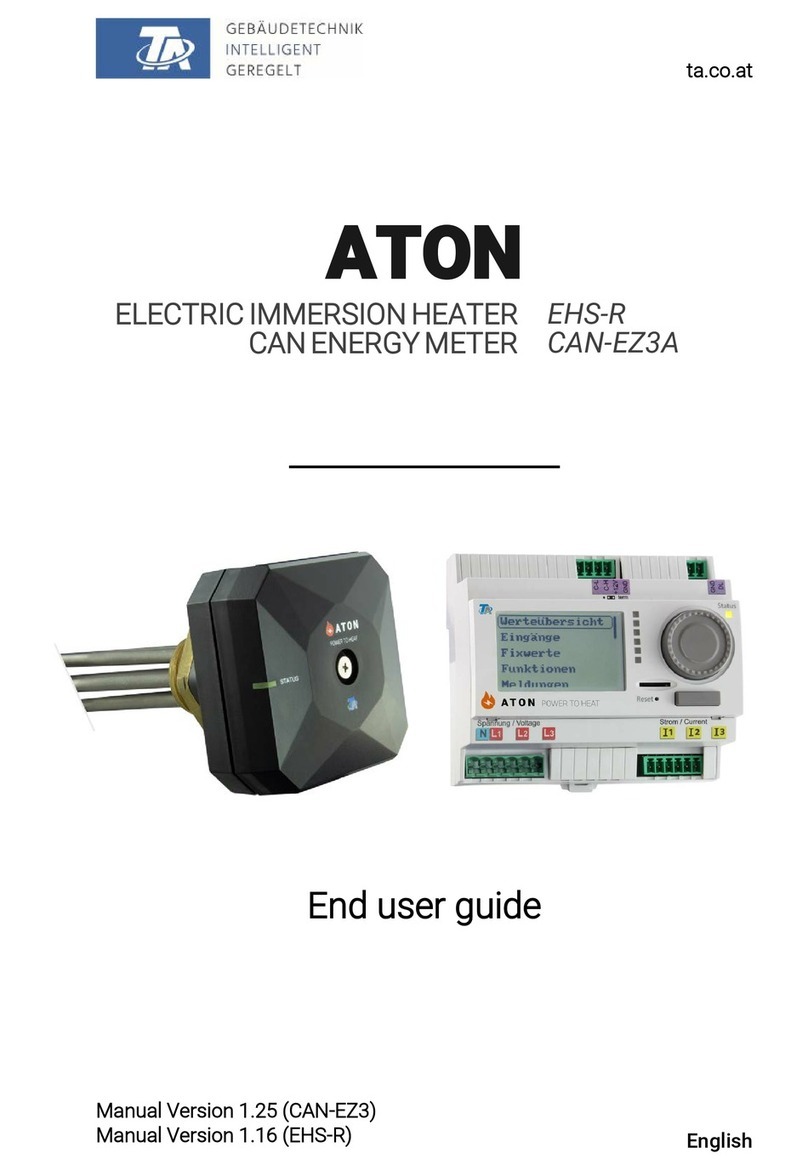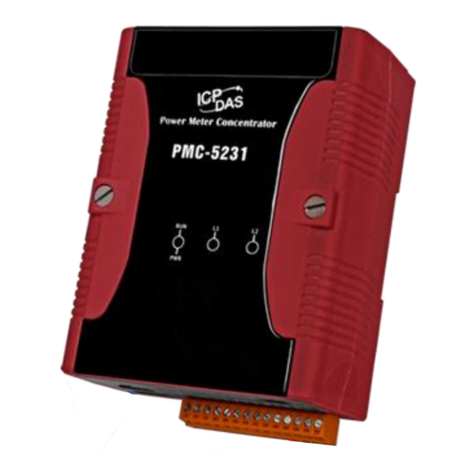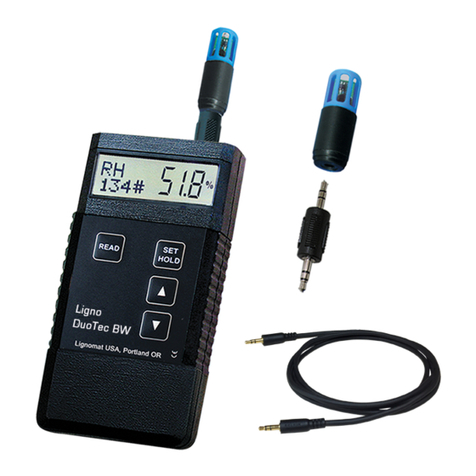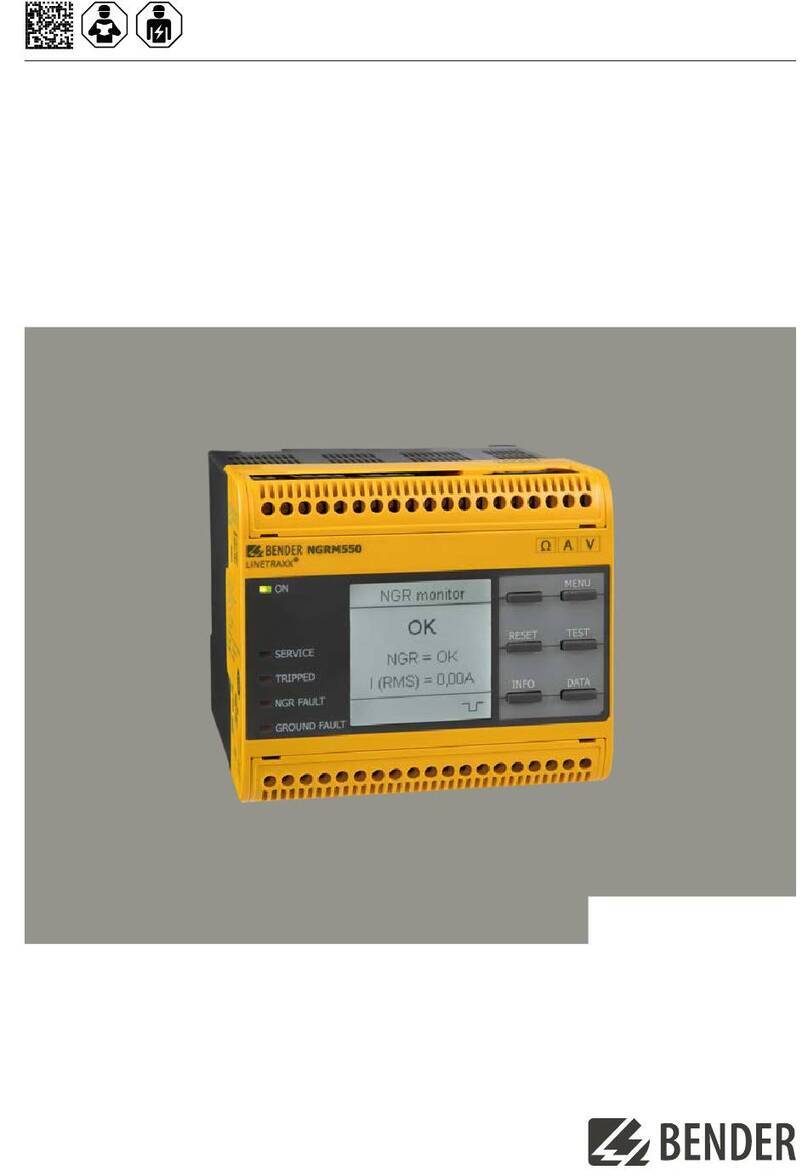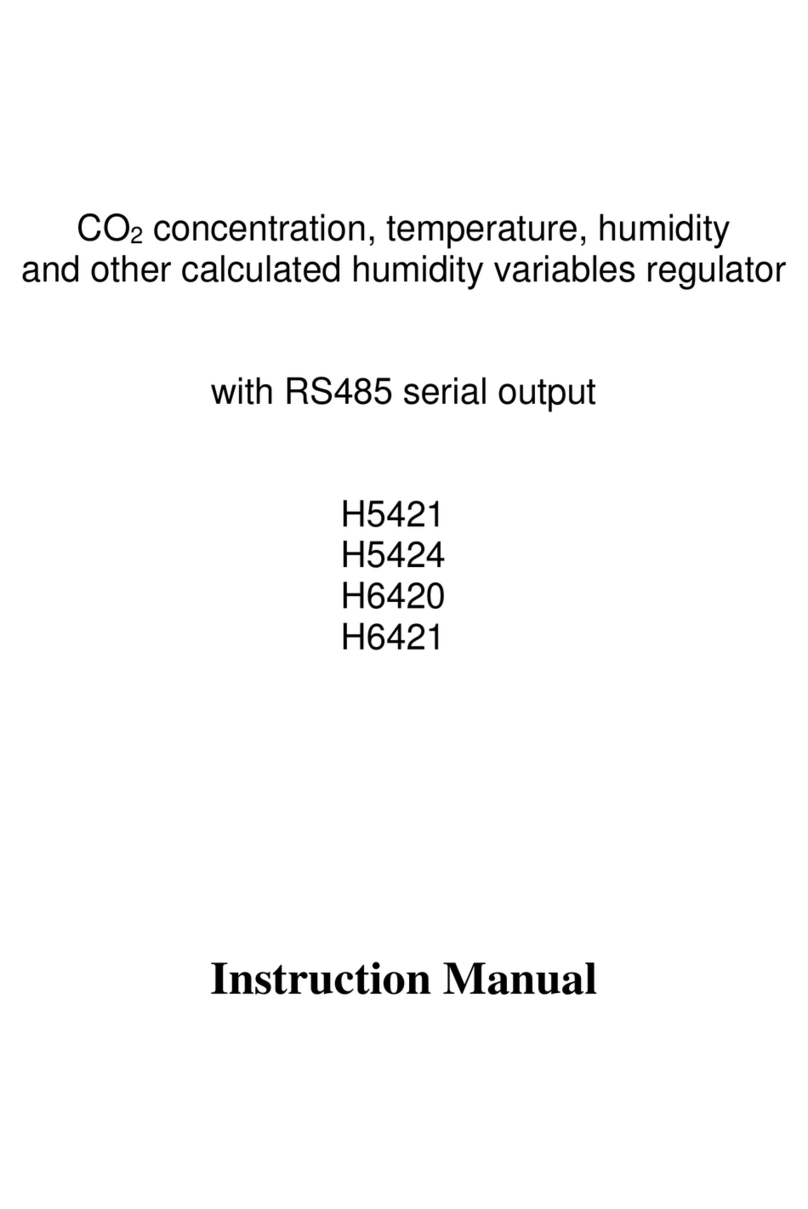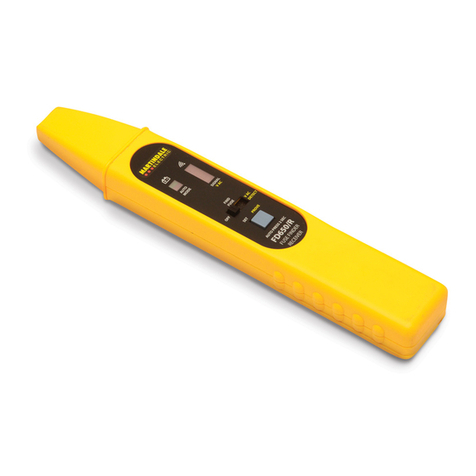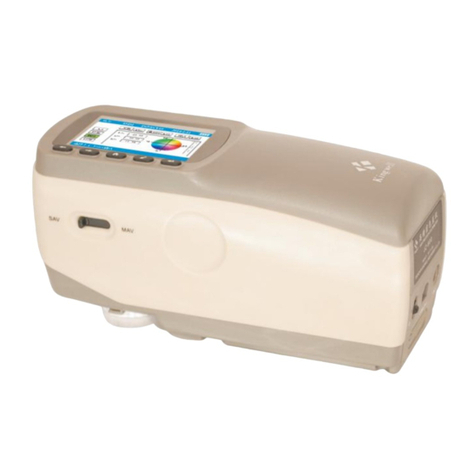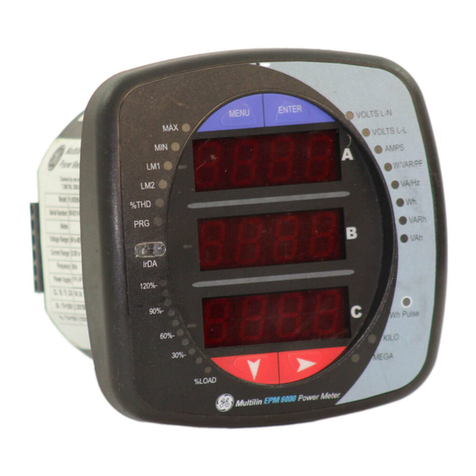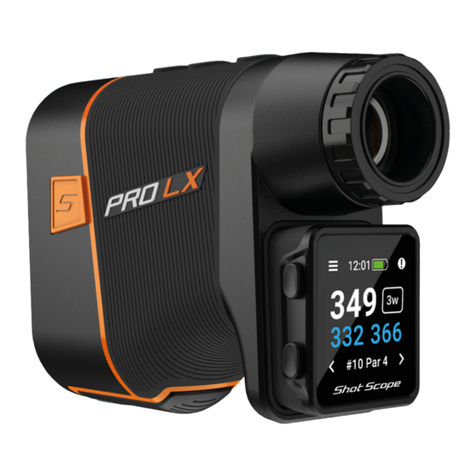Technische Alternative CAN-EZ2 User manual

ta.co.at
CAN-EZ3
CAN ENERGY METER
General information
Installation and connection
Relevant functions
EnglishManual Version 1.21

Table of contents
Safety requirements . . . . . . . . . . . . . . . . . . . . . . . . . . . . . . . . . . . . . . . . . . . . . . . . . . . . . . . . . . . 6
Maintenance . . . . . . . . . . . . . . . . . . . . . . . . . . . . . . . . . . . . . . . . . . . . . . . . . . . . . . . . . . . . . . . . . . . 6
Disposal . . . . . . . . . . . . . . . . . . . . . . . . . . . . . . . . . . . . . . . . . . . . . . . . . . . . . . . . . . . . . . . . . . . . . . 6
Function description . . . . . . . . . . . . . . . . . . . . . . . . . . . . . . . . . . . . . . . . . . . . . . . . . . . . . . . . . . . 7
Installation and connection . . . . . . . . . . . . . . . . . . . . . . . . . . . . . . . . . . . . . . . . . . . . . . . . . . . . . . 8
Power supply . . . . . . . . . . . . . . . . . . . . . . . . . . . . . . . . . . . . . . . . . . . . . . . . . . . . . . . . . . . . . . . . . . 8
Time stamp . . . . . . . . . . . . . . . . . . . . . . . . . . . . . . . . . . . . . . . . . . . . . . . . . . . . . . . . . . . . . . . . . . . . 8
General connection of the CAN-EZ3 . . . . . . . . . . . . . . . . . . . . . . . . . . . . . . . . . . . . . . . . . . . . . . . . . 9
Sensor, DL bus and CAN bus connections . . . . . . . . . . . . . . . . . . . . . . . . . . . . . . . . . . . . . . . . . . . 10
Sensor connection FTS... to VT1 or VT2 . . . . . . . . . . . . . . . . . . . . . . . . . . . . . . . . . . . . . . . . . . 11
Electrical measuring . . . . . . . . . . . . . . . . . . . . . . . . . . . . . . . . . . . . . . . . . . . . . . . . . . . . . . . . . . . . 11
3-phase measuring . . . . . . . . . . . . . . . . . . . . . . . . . . . . . . . . . . . . . . . . . . . . . . . . . . . . . . . . . . 11
1-phase measuring . . . . . . . . . . . . . . . . . . . . . . . . . . . . . . . . . . . . . . . . . . . . . . . . . . . . . . . . . . 11
External hinged current transformers . . . . . . . . . . . . . . . . . . . . . . . . . . . . . . . . . . . . . . . . . . . . 12
Sensor installation . . . . . . . . . . . . . . . . . . . . . . . . . . . . . . . . . . . . . . . . . . . . . . . . . . . . . . . . . . . . . 13
Sensorleitungen . . . . . . . . . . . . . . . . . . . . . . . . . . . . . . . . . . . . . . . . . . . . . . . . . . . . . . . . . . . . . . . 14
Data link for DL bus . . . . . . . . . . . . . . . . . . . . . . . . . . . . . . . . . . . . . . . . . . . . . . . . . . . . . . . . . . . . 15
Bus load from DL sensors . . . . . . . . . . . . . . . . . . . . . . . . . . . . . . . . . . . . . . . . . . . . . . . . . . . . . 15
Terminal diagram, DL bus data link . . . . . . . . . . . . . . . . . . . . . . . . . . . . . . . . . . . . . . . . . . . . . . 15
CAN Bus network . . . . . . . . . . . . . . . . . . . . . . . . . . . . . . . . . . . . . . . . . . . . . . . . . . . . . . . . . . . . . . 16
Wireless system (CORA) . . . . . . . . . . . . . . . . . . . . . . . . . . . . . . . . . . . . . . . . . . . . . . . . . . . . . . . 20
Principles . . . . . . . . . . . . . . . . . . . . . . . . . . . . . . . . . . . . . . . . . . . . . . . . . . . . . . . . . . . . . . . . . . . . 20
Pairing CORA devices . . . . . . . . . . . . . . . . . . . . . . . . . . . . . . . . . . . . . . . . . . . . . . . . . . . . . . . . . . . 20
Relaying wireless signals . . . . . . . . . . . . . . . . . . . . . . . . . . . . . . . . . . . . . . . . . . . . . . . . . . . . . . . . 21
Deleting a pairing . . . . . . . . . . . . . . . . . . . . . . . . . . . . . . . . . . . . . . . . . . . . . . . . . . . . . . . . . . . . . . 21
CORA-DL (cable instead of wireless) . . . . . . . . . . . . . . . . . . . . . . . . . . . . . . . . . . . . . . . . . . . . . . . 22
Installation . . . . . . . . . . . . . . . . . . . . . . . . . . . . . . . . . . . . . . . . . . . . . . . . . . . . . . . . . . . . . . . . . 22
Operation and programming . . . . . . . . . . . . . . . . . . . . . . . . . . . . . . . . . . . . . . . . . . . . . . . . . . . . 23
Inputs . . . . . . . . . . . . . . . . . . . . . . . . . . . . . . . . . . . . . . . . . . . . . . . . . . . . . . . . . . . . . . . . . . . . . . . 23
Default settings . . . . . . . . . . . . . . . . . . . . . . . . . . . . . . . . . . . . . . . . . . . . . . . . . . . . . . . . . . . . . . . 24
Functions . . . . . . . . . . . . . . . . . . . . . . . . . . . . . . . . . . . . . . . . . . . . . . . . . . . . . . . . . . . . . . . . . . 26
Definitions . . . . . . . . . . . . . . . . . . . . . . . . . . . . . . . . . . . . . . . . . . . . . . . . . . . . . . . . . . . . . . . . . 26
COP value (COP= Coefficient of Performance) . . . . . . . . . . . . . . . . . . . . . . . . . . . . . . . . . . . 26
Performance factor β . . . . . . . . . . . . . . . . . . . . . . . . . . . . . . . . . . . . . . . . . . . . . . . . . . . . . . 26
Energy manager . . . . . . . . . . . . . . . . . . . . . . . . . . . . . . . . . . . . . . . . . . . . . . . . . . . . . . . . . . . . . . . 27
Output control . . . . . . . . . . . . . . . . . . . . . . . . . . . . . . . . . . . . . . . . . . . . . . . . . . . . . . . . . . . . . . . . . 29
Energy meter . . . . . . . . . . . . . . . . . . . . . . . . . . . . . . . . . . . . . . . . . . . . . . . . . . . . . . . . . . . . . . . . . 31
Heat meter . . . . . . . . . . . . . . . . . . . . . . . . . . . . . . . . . . . . . . . . . . . . . . . . . . . . . . . . . . . . . . . . . . . 33
Date-specific memory . . . . . . . . . . . . . . . . . . . . . . . . . . . . . . . . . . . . . . . . . . . . . . . . . . . . . . . . . . . 37
Mathematics function . . . . . . . . . . . . . . . . . . . . . . . . . . . . . . . . . . . . . . . . . . . . . . . . . . . . . . . . . . 39
Notes on accuracy . . . . . . . . . . . . . . . . . . . . . . . . . . . . . . . . . . . . . . . . . . . . . . . . . . . . . . . . . . . . 42
Reset . . . . . . . . . . . . . . . . . . . . . . . . . . . . . . . . . . . . . . . . . . . . . . . . . . . . . . . . . . . . . . . . . . . . . . 43
LED status indicators . . . . . . . . . . . . . . . . . . . . . . . . . . . . . . . . . . . . . . . . . . . . . . . . . . . . . . . . . . 43
LED indicators at device start-up . . . . . . . . . . . . . . . . . . . . . . . . . . . . . . . . . . . . . . . . . . . . . . . . . . 43
Basics . . . . . . . . . . . . . . . . . . . . . . . . . . . . . . . . . . . . . . . . . . . . . . . . . . . . . . . . . . . . . . . . . . . . . 44
Device overview . . . . . . . . . . . . . . . . . . . . . . . . . . . . . . . . . . . . . . . . . . . . . . . . . . . . . . . . . . . . . . . 44
LED indicator light . . . . . . . . . . . . . . . . . . . . . . . . . . . . . . . . . . . . . . . . . . . . . . . . . . . . . . . . . . . . . 45
General information on programming parameters . . . . . . . . . . . . . . . . . . . . . . . . . . . . . . . . . . . . . 46
Manual Version 1.21

Table of contents
Designations . . . . . . . . . . . . . . . . . . . . . . . . . . . . . . . . . . . . . . . . . . . . . . . . . . . . . . . . . . . . . . . . . . 47
Date / time / location . . . . . . . . . . . . . . . . . . . . . . . . . . . . . . . . . . . . . . . . . . . . . . . . . . . . . . . . . . 48
Value summary . . . . . . . . . . . . . . . . . . . . . . . . . . . . . . . . . . . . . . . . . . . . . . . . . . . . . . . . . . . . . . 49
Inputs . . . . . . . . . . . . . . . . . . . . . . . . . . . . . . . . . . . . . . . . . . . . . . . . . . . . . . . . . . . . . . . . . . . . . 50
Programming the parameters . . . . . . . . . . . . . . . . . . . . . . . . . . . . . . . . . . . . . . . . . . . . . . . . . . . . . 50
Sensor type and measured variable . . . . . . . . . . . . . . . . . . . . . . . . . . . . . . . . . . . . . . . . . . . . . . 50
Designation . . . . . . . . . . . . . . . . . . . . . . . . . . . . . . . . . . . . . . . . . . . . . . . . . . . . . . . . . . . . . . . . 53
Sensor correction . . . . . . . . . . . . . . . . . . . . . . . . . . . . . . . . . . . . . . . . . . . . . . . . . . . . . . . . . . . 53
Average . . . . . . . . . . . . . . . . . . . . . . . . . . . . . . . . . . . . . . . . . . . . . . . . . . . . . . . . . . . . . . . . . . . 53
Sensor check for analogue sensors . . . . . . . . . . . . . . . . . . . . . . . . . . . . . . . . . . . . . . . . . . . . . 54
Sensor error . . . . . . . . . . . . . . . . . . . . . . . . . . . . . . . . . . . . . . . . . . . . . . . . . . . . . . . . . . . . . 54
Assignment of the possible sensor types to the inputs . . . . . . . . . . . . . . . . . . . . . . . . . . . . . . . 55
Resistance table for various sensor types . . . . . . . . . . . . . . . . . . . . . . . . . . . . . . . . . . . . . . . . . 55
NTC sensors . . . . . . . . . . . . . . . . . . . . . . . . . . . . . . . . . . . . . . . . . . . . . . . . . . . . . . . . . . . . . 56
PTC sensors . . . . . . . . . . . . . . . . . . . . . . . . . . . . . . . . . . . . . . . . . . . . . . . . . . . . . . . . . . . . . 56
Fixed value . . . . . . . . . . . . . . . . . . . . . . . . . . . . . . . . . . . . . . . . . . . . . . . . . . . . . . . . . . . . . . . . . 57
Programming the parameters . . . . . . . . . . . . . . . . . . . . . . . . . . . . . . . . . . . . . . . . . . . . . . . . . . . . . 58
Fixed value type . . . . . . . . . . . . . . . . . . . . . . . . . . . . . . . . . . . . . . . . . . . . . . . . . . . . . . . . . . . . . 58
Digital . . . . . . . . . . . . . . . . . . . . . . . . . . . . . . . . . . . . . . . . . . . . . . . . . . . . . . . . . . . . . . . . . . . . 58
Analogue . . . . . . . . . . . . . . . . . . . . . . . . . . . . . . . . . . . . . . . . . . . . . . . . . . . . . . . . . . . . . . . . . . 59
Pulse . . . . . . . . . . . . . . . . . . . . . . . . . . . . . . . . . . . . . . . . . . . . . . . . . . . . . . . . . . . . . . . . . . . . . 60
Function quantity . . . . . . . . . . . . . . . . . . . . . . . . . . . . . . . . . . . . . . . . . . . . . . . . . . . . . . . . . 60
Designation . . . . . . . . . . . . . . . . . . . . . . . . . . . . . . . . . . . . . . . . . . . . . . . . . . . . . . . . . . . . . . . . 60
Restriction of change authority . . . . . . . . . . . . . . . . . . . . . . . . . . . . . . . . . . . . . . . . . . . . . . . . . 60
Functions . . . . . . . . . . . . . . . . . . . . . . . . . . . . . . . . . . . . . . . . . . . . . . . . . . . . . . . . . . . . . . . . . . 61
Messages . . . . . . . . . . . . . . . . . . . . . . . . . . . . . . . . . . . . . . . . . . . . . . . . . . . . . . . . . . . . . . . . . . 62
CAN bus . . . . . . . . . . . . . . . . . . . . . . . . . . . . . . . . . . . . . . . . . . . . . . . . . . . . . . . . . . . . . . . . . . . 63
Datalogging . . . . . . . . . . . . . . . . . . . . . . . . . . . . . . . . . . . . . . . . . . . . . . . . . . . . . . . . . . . . . . . . . . 64
Datalogging Settings . . . . . . . . . . . . . . . . . . . . . . . . . . . . . . . . . . . . . . . . . . . . . . . . . . . . . . . . . 64
Datalogging Analogue/Digital . . . . . . . . . . . . . . . . . . . . . . . . . . . . . . . . . . . . . . . . . . . . . . . . . . 64
CAN settings . . . . . . . . . . . . . . . . . . . . . . . . . . . . . . . . . . . . . . . . . . . . . . . . . . . . . . . . . . . . . . . . . . 65
CAN analogue inputs . . . . . . . . . . . . . . . . . . . . . . . . . . . . . . . . . . . . . . . . . . . . . . . . . . . . . . . . . . . 66
Node number . . . . . . . . . . . . . . . . . . . . . . . . . . . . . . . . . . . . . . . . . . . . . . . . . . . . . . . . . . . . . . . 66
Designation . . . . . . . . . . . . . . . . . . . . . . . . . . . . . . . . . . . . . . . . . . . . . . . . . . . . . . . . . . . . . . . . 66
CAN bus timeout . . . . . . . . . . . . . . . . . . . . . . . . . . . . . . . . . . . . . . . . . . . . . . . . . . . . . . . . . . . . 67
Sensor check . . . . . . . . . . . . . . . . . . . . . . . . . . . . . . . . . . . . . . . . . . . . . . . . . . . . . . . . . . . . . . . 67
Measured variable . . . . . . . . . . . . . . . . . . . . . . . . . . . . . . . . . . . . . . . . . . . . . . . . . . . . . . . . . . . 67
Value at timeout . . . . . . . . . . . . . . . . . . . . . . . . . . . . . . . . . . . . . . . . . . . . . . . . . . . . . . . . . . . . 68
Sensor correction . . . . . . . . . . . . . . . . . . . . . . . . . . . . . . . . . . . . . . . . . . . . . . . . . . . . . . . . . . . 68
Sensor error . . . . . . . . . . . . . . . . . . . . . . . . . . . . . . . . . . . . . . . . . . . . . . . . . . . . . . . . . . . . . . . . 68
CAN digital inputs . . . . . . . . . . . . . . . . . . . . . . . . . . . . . . . . . . . . . . . . . . . . . . . . . . . . . . . . . . . . . . 69
CAN analogue outputs . . . . . . . . . . . . . . . . . . . . . . . . . . . . . . . . . . . . . . . . . . . . . . . . . . . . . . . . . . 69
Designation . . . . . . . . . . . . . . . . . . . . . . . . . . . . . . . . . . . . . . . . . . . . . . . . . . . . . . . . . . . . . . . . 70
Transmission condition . . . . . . . . . . . . . . . . . . . . . . . . . . . . . . . . . . . . . . . . . . . . . . . . . . . . . . . 70
CAN digital outputs . . . . . . . . . . . . . . . . . . . . . . . . . . . . . . . . . . . . . . . . . . . . . . . . . . . . . . . . . . . . 71
Designation and transmission condition . . . . . . . . . . . . . . . . . . . . . . . . . . . . . . . . . . . . . . . . . . 71
Active CAN nodes . . . . . . . . . . . . . . . . . . . . . . . . . . . . . . . . . . . . . . . . . . . . . . . . . . . . . . . . . . . . . . 71
DL-Bus . . . . . . . . . . . . . . . . . . . . . . . . . . . . . . . . . . . . . . . . . . . . . . . . . . . . . . . . . . . . . . . . . . . . 72
DL settings . . . . . . . . . . . . . . . . . . . . . . . . . . . . . . . . . . . . . . . . . . . . . . . . . . . . . . . . . . . . . . . . . . . 72

Table of contents
DL input . . . . . . . . . . . . . . . . . . . . . . . . . . . . . . . . . . . . . . . . . . . . . . . . . . . . . . . . . . . . . . . . . . . . . 73
DL bus address and DL bus index . . . . . . . . . . . . . . . . . . . . . . . . . . . . . . . . . . . . . . . . . . . . . . . 73
Designation . . . . . . . . . . . . . . . . . . . . . . . . . . . . . . . . . . . . . . . . . . . . . . . . . . . . . . . . . . . . . . . . 74
DL bus timeout . . . . . . . . . . . . . . . . . . . . . . . . . . . . . . . . . . . . . . . . . . . . . . . . . . . . . . . . . . . . . . 74
Sensor check . . . . . . . . . . . . . . . . . . . . . . . . . . . . . . . . . . . . . . . . . . . . . . . . . . . . . . . . . . . . . . . 74
Measured variable . . . . . . . . . . . . . . . . . . . . . . . . . . . . . . . . . . . . . . . . . . . . . . . . . . . . . . . . . . . 74
Value at timeout . . . . . . . . . . . . . . . . . . . . . . . . . . . . . . . . . . . . . . . . . . . . . . . . . . . . . . . . . . . . 74
Sensor correction . . . . . . . . . . . . . . . . . . . . . . . . . . . . . . . . . . . . . . . . . . . . . . . . . . . . . . . . . . . 75
Sensor error . . . . . . . . . . . . . . . . . . . . . . . . . . . . . . . . . . . . . . . . . . . . . . . . . . . . . . . . . . . . . . . . 75
DL digital inputs . . . . . . . . . . . . . . . . . . . . . . . . . . . . . . . . . . . . . . . . . . . . . . . . . . . . . . . . . . . . . 75
Bus load of DL sensors . . . . . . . . . . . . . . . . . . . . . . . . . . . . . . . . . . . . . . . . . . . . . . . . . . . . . . . . . . 75
DL output . . . . . . . . . . . . . . . . . . . . . . . . . . . . . . . . . . . . . . . . . . . . . . . . . . . . . . . . . . . . . . . . . . . . 76
Designation and destination address . . . . . . . . . . . . . . . . . . . . . . . . . . . . . . . . . . . . . . . . . . . . 76
Modbus . . . . . . . . . . . . . . . . . . . . . . . . . . . . . . . . . . . . . . . . . . . . . . . . . . . . . . . . . . . . . . . . . . . . 77
Modbus settings . . . . . . . . . . . . . . . . . . . . . . . . . . . . . . . . . . . . . . . . . . . . . . . . . . . . . . . . . . . . . . . 77
Modbus input . . . . . . . . . . . . . . . . . . . . . . . . . . . . . . . . . . . . . . . . . . . . . . . . . . . . . . . . . . . . . . . . . 78
Modbus output . . . . . . . . . . . . . . . . . . . . . . . . . . . . . . . . . . . . . . . . . . . . . . . . . . . . . . . . . . . . . . . . 79
CORA devices . . . . . . . . . . . . . . . . . . . . . . . . . . . . . . . . . . . . . . . . . . . . . . . . . . . . . . . . . . . . . . . 80
fiD sub-menu . . . . . . . . . . . . . . . . . . . . . . . . . . . . . . . . . . . . . . . . . . . . . . . . . . . . . . . . . . . . . . . . . 80
Input variables . . . . . . . . . . . . . . . . . . . . . . . . . . . . . . . . . . . . . . . . . . . . . . . . . . . . . . . . . . . . . . . . 80
Parameters . . . . . . . . . . . . . . . . . . . . . . . . . . . . . . . . . . . . . . . . . . . . . . . . . . . . . . . . . . . . . . . . . . . 81
Output variables . . . . . . . . . . . . . . . . . . . . . . . . . . . . . . . . . . . . . . . . . . . . . . . . . . . . . . . . . . . . . . . 81
General settings . . . . . . . . . . . . . . . . . . . . . . . . . . . . . . . . . . . . . . . . . . . . . . . . . . . . . . . . . . . . . 82
Current transformer . . . . . . . . . . . . . . . . . . . . . . . . . . . . . . . . . . . . . . . . . . . . . . . . . . . . . . . . . . . . 82
Phase simulation . . . . . . . . . . . . . . . . . . . . . . . . . . . . . . . . . . . . . . . . . . . . . . . . . . . . . . . . . . . . . . 82
Language . . . . . . . . . . . . . . . . . . . . . . . . . . . . . . . . . . . . . . . . . . . . . . . . . . . . . . . . . . . . . . . . . . . . 82
Brightness . . . . . . . . . . . . . . . . . . . . . . . . . . . . . . . . . . . . . . . . . . . . . . . . . . . . . . . . . . . . . . . . . . . 82
Display timeout . . . . . . . . . . . . . . . . . . . . . . . . . . . . . . . . . . . . . . . . . . . . . . . . . . . . . . . . . . . . . . . . 82
Simulation . . . . . . . . . . . . . . . . . . . . . . . . . . . . . . . . . . . . . . . . . . . . . . . . . . . . . . . . . . . . . . . . . . . 83
Currency . . . . . . . . . . . . . . . . . . . . . . . . . . . . . . . . . . . . . . . . . . . . . . . . . . . . . . . . . . . . . . . . . . . . . 83
Access to menu . . . . . . . . . . . . . . . . . . . . . . . . . . . . . . . . . . . . . . . . . . . . . . . . . . . . . . . . . . . . . . . 83
User defined designations . . . . . . . . . . . . . . . . . . . . . . . . . . . . . . . . . . . . . . . . . . . . . . . . . . . . . . . 84
User . . . . . . . . . . . . . . . . . . . . . . . . . . . . . . . . . . . . . . . . . . . . . . . . . . . . . . . . . . . . . . . . . . . . . . 85
Current user . . . . . . . . . . . . . . . . . . . . . . . . . . . . . . . . . . . . . . . . . . . . . . . . . . . . . . . . . . . . . . . . . . 85
Changing the password . . . . . . . . . . . . . . . . . . . . . . . . . . . . . . . . . . . . . . . . . . . . . . . . . . . . . . . . . 85
Version and serial number . . . . . . . . . . . . . . . . . . . . . . . . . . . . . . . . . . . . . . . . . . . . . . . . . . . . . . 87
Data administration . . . . . . . . . . . . . . . . . . . . . . . . . . . . . . . . . . . . . . . . . . . . . . . . . . . . . . . . . . . 88
Function data . . . . . . . . . . . . . . . . . . . . . . . . . . . . . . . . . . . . . . . . . . . . . . . . . . . . . . . . . . . . . . . . . 88
Load... . . . . . . . . . . . . . . . . . . . . . . . . . . . . . . . . . . . . . . . . . . . . . . . . . . . . . . . . . . . . . . . . . . . . 89
Deleting, renaming and sending saved files . . . . . . . . . . . . . . . . . . . . . . . . . . . . . . . . . . . . . . . 90
Save... . . . . . . . . . . . . . . . . . . . . . . . . . . . . . . . . . . . . . . . . . . . . . . . . . . . . . . . . . . . . . . . . . . . . 91
Firmware Load… . . . . . . . . . . . . . . . . . . . . . . . . . . . . . . . . . . . . . . . . . . . . . . . . . . . . . . . . . . . . . . . 92
Status . . . . . . . . . . . . . . . . . . . . . . . . . . . . . . . . . . . . . . . . . . . . . . . . . . . . . . . . . . . . . . . . . . . . . . . 92
Total reset . . . . . . . . . . . . . . . . . . . . . . . . . . . . . . . . . . . . . . . . . . . . . . . . . . . . . . . . . . . . . . . . . . . 93
Restart . . . . . . . . . . . . . . . . . . . . . . . . . . . . . . . . . . . . . . . . . . . . . . . . . . . . . . . . . . . . . . . . . . . . . . 93
Reset . . . . . . . . . . . . . . . . . . . . . . . . . . . . . . . . . . . . . . . . . . . . . . . . . . . . . . . . . . . . . . . . . . . . . . . . 93
Change-Log . . . . . . . . . . . . . . . . . . . . . . . . . . . . . . . . . . . . . . . . . . . . . . . . . . . . . . . . . . . . . . . . . . 93
System values . . . . . . . . . . . . . . . . . . . . . . . . . . . . . . . . . . . . . . . . . . . . . . . . . . . . . . . . . . . . . . . 94
Technical data . . . . . . . . . . . . . . . . . . . . . . . . . . . . . . . . . . . . . . . . . . . . . . . . . . . . . . . . . . . . . . . 96


6
Safety requirements
This device is state of the art and meets all necessary safety regulations. It may only be used in accord-
ance with the technical data and the safety requirements and regulations listed below. When using the
device, also observe the statutory and safety regulations apposite to the particular use. Any other use will
automatically void all warranty rights.
• The device must only be installed in a dry interior room.
• In accordance with local regulations, it must be possible to isolate the 230 V cable to the energy
meter from the mains using an omnipolar isolating facility (connector/socket or 2-pole isolator).
• Never interchange the safety low voltage connections (e.g. sensor connections) with the 230 V
connections. Destruction and life threatening voltages at the device and the connected sensors
may occur.
• Safe operation is no longer possible if the controller or connected equipment exhibits visual
damage, no longer functions or has been stored for lengthy periods in unsuitable conditions. If
this is the case, disable the controller and equipment and secure against unintentional use.
• Heat-sensitive system components (e.g. plastic pipes) must be equipped with safety devices
(e.g. thermal high limit safety cut-out for underfloor heating), which prevent overheating in the
event of a fault in the controller or another system component.
Maintenance
If treated and used correctly, the device will not require any maintenance. Use a cloth moistened with mild
alcohol (such as methylated spirits) to clean. Never use corrosive cleaning agents or solvents such as
chloroethylene or trichloroethylene.
No components relevant to long term accuracy are subject to loading if the device is used correctly. Con-
sequently long term drift is extremely low. The device therefore cannot be calibrated. Thus applying any
compensation is impossible.
The design characteristics of the device must not be changed during repairs. Spare parts must corre-
spond to the original spare parts and must be used in accordance with the build version.
Disposal
• Devices no longer in use or beyond a state of repair must be disposed of in an en-
vironmentally responsible manner by an authorised collection point. They must never
be treated as ordinary household waste.
• We can undertake the environmentally responsible disposal of devices sold by the
Technischen Alternative company upon request.
• Packaging material must be disposed of in an environmentally responsible manner.
• Incorrect disposal may result in considerable damage to the environment, as many of
the materials used require professional handling.
All installation and wiring work on the controller must only be carried out in a zero volt
state. The opening, connection and commissioning of the device may only be carried
out by competent personnel. While doing so, they must observe all local safety re-
quirements.

Function description
7
Function description
The main purpose of the CAN-EZ3 energy meter is energy management in conjunction with several
EHS(-R) electric immersion heaters and other actuators, as well as metering energy and heat.
Energy management primarily includes current measurement in the building and the corresponding
control of immersion heaters (and other consumers) for the use of surplus energy yields in the form
of DHW storage, instead of exporting it to the mains, which can be less profitable.
As the CAN-EZ3 has the full functionality of the x2 series and multiple sensor inputs, other tasks such
as heat and energy metering are also possible. However, only specific functions are used for the ac-
tual purpose of the energy meter and these are described in these instructions.
For tasks such as heat metering, 4 analogue inputs for temperature sensors, 2 inputs for VSG flow
rate transducers or FTS flow sensors and a DL bus interface for DL sensors are available.
The CAN-EZ3 is programmed either with TAPPS2, directly via the display and buttons on the energy
meter or remotely via the UVR16x2 controller, the CAN-MTx2 CAN monitor or the C.M.I.
Input values, system values from electrical measuring and results of the metering and functions can
be relayed to other devices via the CAN bus.
The same applies to values from inputs that are not used for any metering (e.g. in the case of a CAN
I/O module).
The CAN-EZ3 has no outputs.
The CAN-EZ3 is not calibrated and consequently may not be used for billing purposes.

Installation and connection
8
Installation and connection
The CAN-EZ3 is installed in a meter box in accordance with local regulations. It can be snapped on
to a top-hat rail (DIN support rail TS35 to EN 50022).
The 2-pole connectors of the current transformers are connected to the CAN-EZ3 and folded over the
cores. When doing this, pay attention to the correct assignment (I1 - I3) in accordance with the volt-
age connections and a positive phase sequence.
For voltage measuring, the required wires are connected to the voltage terminals in the CAN-EZ3.
The connection of sensors, and CAN and DL buses is carried out using the supplied connectors
Power supply
The CAN-EZ3 is supplied with power via the voltage measuring connection U1 (first phase).
Time stamp
The CAN-EZ3 has a real time clock and, as node 1 in the CAN bus network, can therefore transmit the
time and date to other devices.
Caution! The surfaces of the current transformer ferrite cores must be completely clean. Even tiny
dust particles or greasy films can severely affect the measuring result. These surfaces must there-
fore be cleaned with a clean, lint-free cloth or clean fingers before closing.

Installation and connection
9
General connection of the CAN-EZ3
The CAN-EZ3 must always be connected by qualified personnel, taking into account the conditions
on site and local safety regulations. The safety requirements on page 6 must also be observed.
The following diagram is only an example of the installation of a CAN-EZ3 in a typical TN-S system
with surplus power supply.
NZHS Normal supply main switches
HAS Grid connection fuses
ENS Device for grid monitoring with associat-
ed switching element
FI Residual current device
MCB Miniature circuit breaker
Wh Electricity meter of the energy supplier
Device is internally fused; only the supply
cable to the device must be fused

Installation and connection
10
Sensor, DL bus and CAN bus connections
AN1 - AN4
Sensor inputs 1-4
Parameterisation in the Inputs (1-4) menu
Connection of sensors between AN1/2/3/4 and sensor earth
VT1 & VT2
Special connection for FTS flow sensors (excl. DL) and other DL sensors
Parameterisation: Inputs menu
Inputs 5-6 for temperature (sensor PT1000)
Inputs 7-8 for flow rate and selection of the sensor (DN) or digital signals (S0)
Connection between each sensor Sx and earth GND.
The earth connection (GND) is looped.
CAN bus
(C-L, C-H
+12 V, GND)
CAN-Low, CAN-High, +12 V, earth
The principles of bus cabling are described extensively in the manuals for the free-
ly programmable controllers and must be observed.
Modbus Interface for Modbus RTU485 (as master or slave)
DL bus
DL bus interface for DL sensors (e.g. FTS-DL (with intermediate board))
Parameterisation: DL bus menu (any analogue input)
Connection between DL and GND
Ext. connec-
tion Antenna
No screws should be used to secure the antenna cable – press and pull to con-
nect and terminate. The antenna itself is intended for mounting outside the meter
box. The antenna should not be fitted directly on metal (e.g. meter box).
S0 output
The connection for S0 signals is located on the device's lower terminal strip
(graphic on page 11).
This output can emit pulses with max. 20 Hz and a pulse duration of at least
25 ms.
Sensor inputs S1 - S4 VT1 CAN bus VT2 DL bus
Ext. connection antenna
Modbus
GND
+5V (for FTS)
Analogue input (S5/S6)
GND
GND
Digital input (S7/S8)

Installation and connection
11
Sensor connection FTS... to VT1 or VT2
A flow rate sensor can be connected directly to the CAN-EZ3 without an intermediate board. For this,
a ribbon cable, which is available separately, is adjusted to the required length on site. This is done
by pressing the 2nd plug onto the cable according to the following drawing.
Electrical measuring
3-phase measuring
All 3 phase conductors (L1 - L3) are connected to voltage terminals L1-L3 and the neutral conductor
to the N terminal. The 3 external hinged current transformers are connected to terminals I1 – I3 in
the correct sequence and folded over the wires to be measured.
For single measurements, it is possible to set the "Phase simulation" parameter in the General set-
tings to "Yes". In this case, the values (voltage / cos phi / output) for L2 and L3 are simulated inter-
nally using L1. Phase simulation is based on a clockwise rotating field, therefore a clockwise rotating
field must also be observed for current measurement at I2 and I3.
This results in less precise measuring. When phase simulation is activated, phases L2 and L3 are
output as 0. When phase simulation is deactivated, the high-resistance voltage input may result in
random values being displayed at L2 and L3 due to interference effects. This can be eliminated by
additionally routing the neutral conductor N to voltage inputs L2 and L3.
1-phase measuring
Only the phase conductor (to voltage terminal L1) and the neutral conductor N are connected. An ex-
ternal hinged current transformer is connected to terminal I1 and folded over the wire to be meas-
ured.
The "Phase simulation" parameter is irrelevant for this.

Installation and connection
12
External hinged current transformers
Ensure that the current transformers are assigned correctly (I1 to L1, I2 to L2 and I3 to L3) and that
the energy direction is observed.
PLEASE NOTE: Before snapping the current transformer onto the phase conductors, they must al-
ready be connected to the CAN-EZ3. Otherwise the current transformers can be damaged.
Each external current transformer is labelled with "K L", whereby the energy direction must be
from K to L for positive metering.
The poles of the cable connecting the electricity sensor and the energy meter must not be swapped.
The white cable must be on the left and the black cable on the right.
Each current transformer must be closed carefully by clicking the snap fastener securely into place.
If the energy direction is changed, the energy meter counts in the negative.
energy direction
Mains side building side
This cable is either white
or red.

Installation and connection – Sensor connection
13
Sensor installation
Correct arrangement and installation of the sensors is extremely important for correct functioning of
the system. To this end, also ensure that they are completely inserted in their sensor wells. The cable
fittings provided serve as strain relief. When used outdoors, no water must be allowed to penetrate
the sensor wells (risk of frost). The contact sensors must be insulated well to protect them from be-
ing influenced by the ambient temperature.
Fundamentally, sensors should not be exposed to moisture (such as condensation) since this can
diffuse through the cast resin and damage the sensor. If this happens, heating the sensor to 90 °C
for an hour may help. When using sensor wells in stainless steel cylinders or swimming pools, par-
ticular attention must be given to their corrosion resistance.
•Collector sensor (grey lead with junction box): Either insert into a pipe which is brazed or riveted
directly to the absorber and protrudes from the collector housing, or insert a tee into the flow
manifold of the outermost collector into which the sensor well, together with the brass cable fit-
ting (= protection against moisture), can be inserted; then insert the sensor. To protect against
lightning damage, the junction box has a surge protection (voltage dependent resistor) which is
clamped in parallel between the sensor and the extension cable.
•Boiler sensor (boiler flow): This sensor is either inserted into a sensor well in the boiler or fitted
to the flow line as close to the boiler as possible.
•DHW cylinder sensor: The sensor required for the solar thermal system should be used with a
sensor well for finned tube heat exchangers just above the exchanger or, if integrated smooth
tube heat exchangers are used, in the lower third of the exchanger or the exchanger’s return out-
let so that the sensor well protrudes into the heat exchanger tube. The sensor monitoring the
heating of the DHW cylinder by the boiler is installed at a level corresponding to the amount of
domestic hot water required during the heating season. The supplied cable fitting acts as strain
relief. Installation below the associated coil or heat exchanger is not permissible under any cir-
cumstances.
•Buffer sensor: The sensor required for the solar thermal system is fitted in the lower section of
the cylinder just above the solar indirect coil using the sensor well supplied. The supplied cable
fitting acts as strain relief. As the reference sensor for the heating system hydraulics, it is recom-
mended to insert the sensor into the sensor well between the centre and upper third of the buffer
cylinder, or positioned against the cylinder wall underneath the insulation.
•Pool sensor (swimming pool): Fit a tee into the suction line immediately on the pool outlet and
insert the sensor with a sensor well. In the process, ensure the material used is corrosion-resist-
ant. A further option would be to fit the sensor as a contact sensor with appropriate thermal insu-
lation against ambient influences.
•Contact sensor: Use scroll springs, pipe clips, etc.to attach the contact sensor to the respective
line. Ensure the material used is suitable (corrosion, temperature resistance, etc.). Then insulate
the sensor thoroughly so that the pipe temperature is captured accurately and ambient tempera-
tures cannot falsify the result.
•DHW sensor: A rapid reaction to changes in the water volume is extremely important when using
the controller in systems that generate domestic hot water by means of an external heat
exchanger and variable speed pump (freshwater module). Therefore fit the DHW sensor directly
on the heat exchanger outlet. This ultra-quick sensor (special accessory, type MSP ...) should
protrude into the output with the aid of a tee sealed in with an O-ring. The heat exchanger should
be installed upright with the DHW outlet at the top.
•Radiation sensor: The parallel collector orientation is important in order to obtain a measure-
ment that corresponds to the collector position. Consequently it should be secured to the sheet
steel covering or adjacent to the collector on an extension of the mounting rail. To this end, the
sensor casing has a blind hole that can be opened at any time. The sensor is also available as a
wireless version.

Installation and connection – Sensor connection
14
•Room sensor: This sensor is intended for installation in the living space (reference room). Do not
install the room sensor near a heat source or window. By simply replugging a jumper inside the
sensor, each room sensor can also be used exclusively as a remote adjuster (no room tempera-
ture influence). It is only suitable for operation in dry rooms. The sensor is also available as a
wireless version.
•Outside temperature sensor: This sensor is installed on the coldest wall (usually facing north)
some two meters above the ground. Avoid temperature influences from nearby air shafts, open
windows, cable ways, etc. It must not be subjected to direct insolation.
Sensorleitungen
All sensor leads with a cross-section of 0.5 mm2 can be extended to up to 50 metres. With this lead
length and a PT1000 temperature sensor, the measuring error is approximately +1 K. A correspond-
ingly larger cross-section is required for longer leads or a lesser measuring error. In order to prevent
measurement fluctuations and ensure perfect signal transmission, sensor leads must not be sub-
jected to external negative influences. When using non-screened cables, route sensor leads and 230
V cables either in separate cable conduits or with a minimum clearance of 5 cm. If screened cables
are used, the screen must be connected to the sensor earth.

Installation and connection – DL bus
15
Data link for DL bus
The DL bus has only 2 wires: DL and GND (sensor earth). The DL bus itself supplies the power supply
for the DL bus sensors.
Cables can be routed with a star topology or in series (from one device to the next).
Any cable with a cross-section of 0.75 mm² up to 30 m in length can be used as a data link. Over 30
m, the use of a shielded cable is recommended, increasing the permissible cable length to 100 m.
Long cable conduits routed closely next to each other for mains and data links result in faults being
induced into the data link from the mains. We therefore recommend a minimum clearance of 20 cm
between two cable conduits or the use of screened cables.
Use separate, screened cables when capturing data from two controllers with a single datalogger.
Never run the data link together with a CAN bus cable in the same conduit.
Bus load from DL sensors
A 2-pole cable provides both the power supply and the signal transfer from DL bus sensors. An ad-
ditional power supply by means of an external power supply unit (such as with the CAN bus) is not
possible.
Take the "bus load" into consideration as sensors have a relatively high current demand:
The CAN-EZ3 energy meter provides a maximum bus load of 100 %. The bus loads of the electronic
sensors are listed in the technical data of the relevant sensors.
Example: The FTS4-50DL electronic sensor has a bus load of 25 %. Consequently, up to four FTS4-
50DL sensors can be connected to the DL bus.
Terminal diagram, DL bus data link

Installation and connection – CAN bus
16
CAN Bus network
Terminal diagram, CAN Bus cable
Guidelines for the topology of CAN networks
Technical principles
The CAN bus comprises the cables CAN-High,
CAN-Low, GND and one +12 V supply cable for
bus components without their own power sup-
ply. The combined total load of all devices with
12 V and 24 V supply must not exceed 6 W.
Design CAN networks in a linear fashion and set
a terminator at each network termination. This
is ensured by the termination of the end devic-
es.
In the case of larger networks (covering several
buildings), problems can occur through electro-
magnetic interference and potential differenc-
es.
To avoid or to the greatest extent manage such
problems, take the following measures:
• Cable screening
The bus cable screen must be connected well at every node to provide continuity. For larger
networks we recommend including the screen in the equipotential bonding, in line with the
examples shown.
• Equipotential bonding
As low an ohm connection as possible to the earth potential is particularly important. Where
cables enter buildings, ensure that the cable entries are in the same location where possible
and that all are connected to the same equipotential bonding system (SingleEentryPoint prin-
ciple). The purpose is to create potentials that are as similar as possible, in order to achieve
the smallest possible potential difference to adjacent lines in case one line suffers a voltage
surge (lightning strike). Also ensure a corresponding clearance between the cable and light-
ning protection systems.
The equipotential bonding also has positive properties to counteract interferences emitted
from linked cables.

Installation and connection – CAN bus
17
• Avoiding earth loops
Where a bus cable is routed between several buildings, ensure that earth loops are avoided.
The reason for this is that buildings actually have different potentials compared to the earth
potential. An earth loop is created when connecting one cable screen in each building
directly with the equipotential bonding system. In other words, a current flows from the
higher to the lower potential.
For example, if lightning strikes near one of the buildings, the potential of that building will
briefly be raised by several kV.
In this case, the equalizing current flows to earth via the bus screen and causes an extreme
electromagnetic input which can result in the destruction of the bus components.
Lightning protection
Efficient lighting protection is highly dependent on good building earthing that meets the relevant
regulations.
An external lightning protection system offers protection against a direct lightning strike.
In order to protect against voltage surges in the 230 V mains supply cable (indirect lightning strike),
appropriate lightning conductors and surge arresters compliant with local regulations must be fitted
in the upstream distribution systems.
In order to protect the individual components of a CAN network against indirect lightning strike, we
recommend the use of surge arresters specifically developed for bus systems.
Example: CAN bus surge arresters CAN-UES from Technische Alternative
Gas discharge arrester for indirect earthing EPCOS N81-A90X
Examples of different network versions
Key to symbols:
Max. cable length: 1000 m at 50 kbit/s
The screen must be continued at each network node and be connected to the device earth (GND).
The screen earthing or GND must only be implemented indirectly via a gas discharge arrester.
Ensure that no unintentional direct connection of earth or screen and the earth potential is created
(e.g. via sensors and the earthed pipework).
... device with its own power supply (RSM610, UVR16x2, UVR67 etc.)
... device is supplied by the bus (CAN-I/O 45, CAN-MTx2 etc.)
... terminated (end devices) ... open termination
... gas discharge arrester for indirect earthing

Installation and connection – CAN bus
18
Cable selection and network topology
Screened twisted pairs have proven useful in CANopen networks. These are cables with twisted
pairs of conductors and a shared external screen. Such cables are relatively resistant to EMC inter-
ference and can still carry 50 kbit/s for up to 1000 m. The CANopen recommendations (CiA DR 303-
1) for cable cross-sections are given in the table below.
The maximum cable length also depends on the number of nodes [n] linked with the bus cable and
the cable cross-section [mm²].
Bus rate
In the CAN bus / CAN settings menu of the UVR16x2, the bus rate can be set to between 5 and 500
kbit/s, whereby lower bus rates enable longer cable networks. However, in this case, the cable cross-
section must be increased accordingly.
The standard bus rate of the CAN network is 50 kbit/s (50 kBaud), which is specified for many CAN
bus devices.
Important: All devices in the CAN bus network must have the same transfer rate in order to be able
to communicate with each other.
Recommendations
A 2x2-pole, screened twisted pair (twist CAN-L with CAN-H or +12 V with GND) with a cable cross-
section of at least 0.5 mm² and a conductor-to-conductor capacity of no more than 60 pF/m and a
nominal impedance of 120 ohms. The standard bus speed of the UVR16x2 is 50 kbit/s. This recom-
mendation corresponds, for example, to cable type Unitronic®-BUS CAN 2x2x0.5 supplied by Lapp
Kabel for permanent installation in buildings or conduits. Theoretically this would enable a bus
length of approx. 500 m to guarantee reliable transmission.
For direct routing underground, earth cable 2x2x0.5 mm² supplied by HELUKABEL, part no. 804269,
or earth cable 2x2x0.75 mm² supplied by Faber Kabel, part no. 101465, would be suitable.
Bus length
[m]
Resistance in terms
of length [mΩ/m]
Cross-section
[mm2]
0...40 70 0,25...0,34
40...300 < 60 0,34...0,60
300...600 < 40 0,50...0,60
600...1000 < 26 0,75...0,80
Cable cross-section
[mm2]
Maximum length [m]
n=32 n=63
0,25 200 170
0,50 360 310
0,75 550 470
Bus rate [kbit/s] Maximum permissible total bus length [m]
5 10.000
10 5.000
20 2.500
50 (standard) 1.000
125 400
250 200
500 100

Installation and connection – CAN bus
19
Wiring
A CAN BUS network should never have a star topology. Rather, the correct topology is a line from the
first device (with terminator) to the second, third and so forth. The last bus device has the termina-
tion jumper again.
Example: Connection of three network nodes (NWN) with a 2x2-pole cable and termination of the ter-
minal network nodes (network inside one building)
Each CAN network is to be provided with a 120 ohm BUS terminator at the first and last network sub-
scriber (= termination). This is achieved with a plug-in jumper at the back of the controller. Each CAN
network therefore always has two terminators (one at each end). Branch cables or a star topology
are not permissible for CAN wiring.

Wireless system (CORA)
20
Wireless system (CORA)
Principles
The wireless system comprises multiple CORA devices (e.g. CAN-EZ3 and EHS), which communicate
with one another, exchange data or transfer firmware. This functionality cannot fully replace the CAN
bus.
For the wireless system, the CAN-EZ3 has an external antenna. The antenna itself is intended for
mounting outside the meter box. The antenna should not be fitted directly on metal (e.g. meter box).
The wireless range is around 1000 m outdoors, and typically 30 m in buildings (through approx. 2
walls/ceilings, depending on thickness and material). Up to 3 additional wireless devices can be
used as a bridge to enable data to be exchanged under deviating conditions.
A CAN-EZ3 can be paired with maximum 12 CORA devices.
RCV-DL, GBS-F and RAS-F devices cannot be used.
Wireless system settings can be found in the main menu item CORA devices.
Pairing CORA devices
In the ATON set, the included CAN-EZ3A energy meter and the EHS-R immersion heater are already
paired at the factory.
In the main menu, under "CORA devices", a New CORA device is selected.
Once the device type has been selected, additional setting options appear.
Switch to device parameters
Pairing status
Wireless or cable connection
Specify CORA ID from target device...
...and select Pair
The target device must have Allow pairing enabled. Information about this can be found in the oper-
ating instructions for the relevant device.
To pair an additional device, navigate back to the Devices menu and create another New device.
If Manual mode is set to ON, the item Output appears under it. Here, you can adjust the set output
for manual mode.
If Connect automatically is set to Yes, when the wireless signal is lost, the system automatically at-
tempts to restore the connection.
Table of contents
Other Technische Alternative Measuring Instrument manuals
Popular Measuring Instrument manuals by other brands

Kobold
Kobold HND-P105 operating instructions
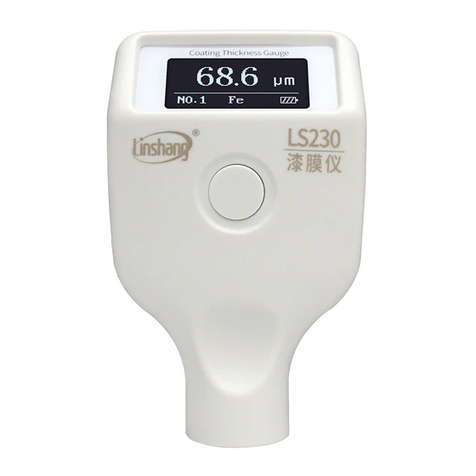
LINSHANG
LINSHANG LS230 user manual
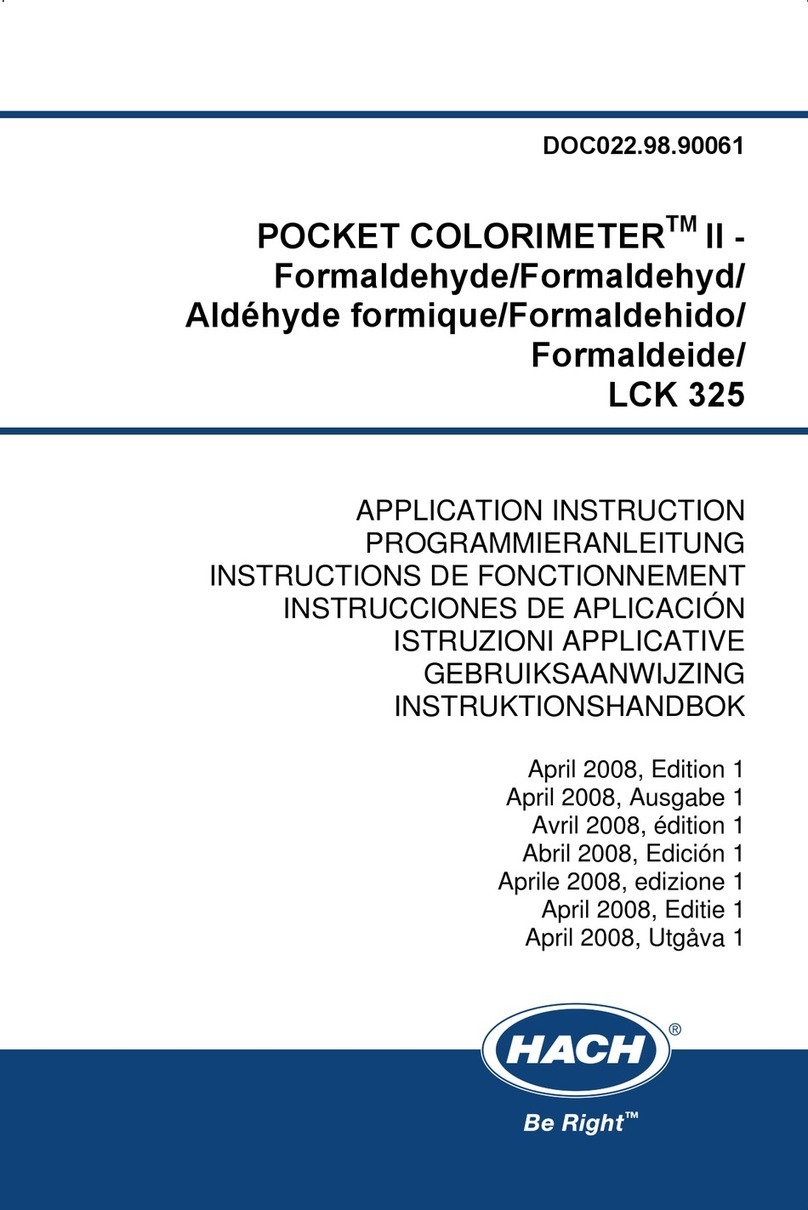
Hach
Hach POCKET COLORIMETER II LCK 325 Application Instruction
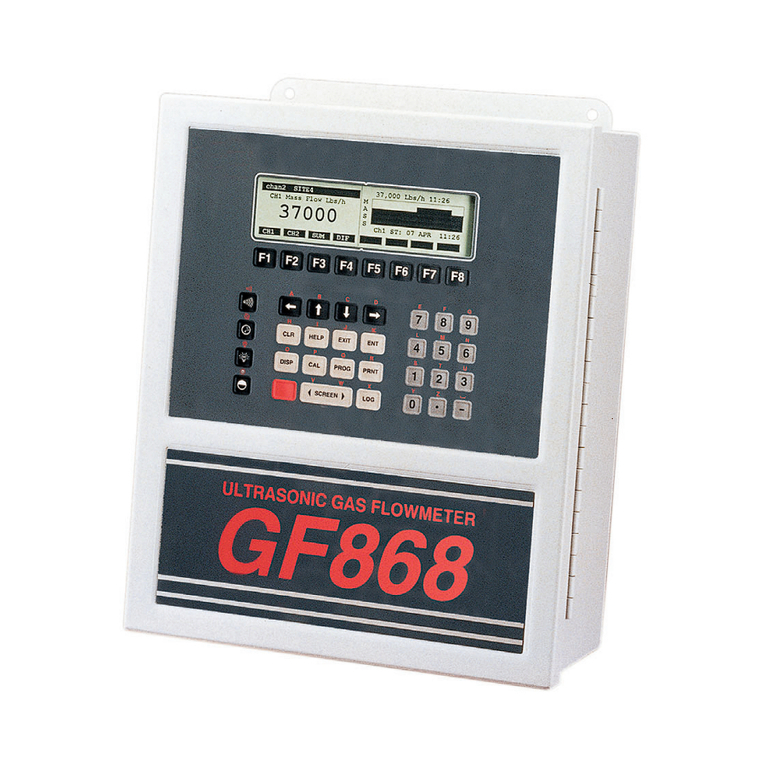
Panametrics
Panametrics GF868 Programming manual
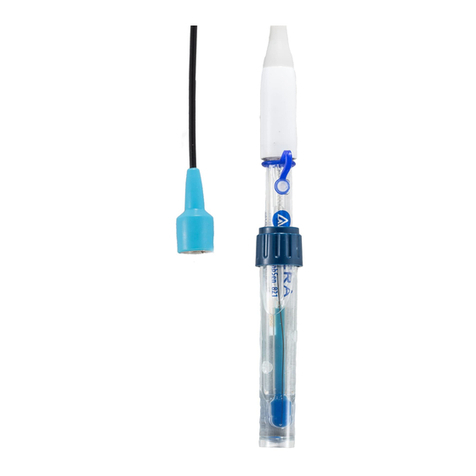
Apera Instruments
Apera Instruments LabSen 821 user manual
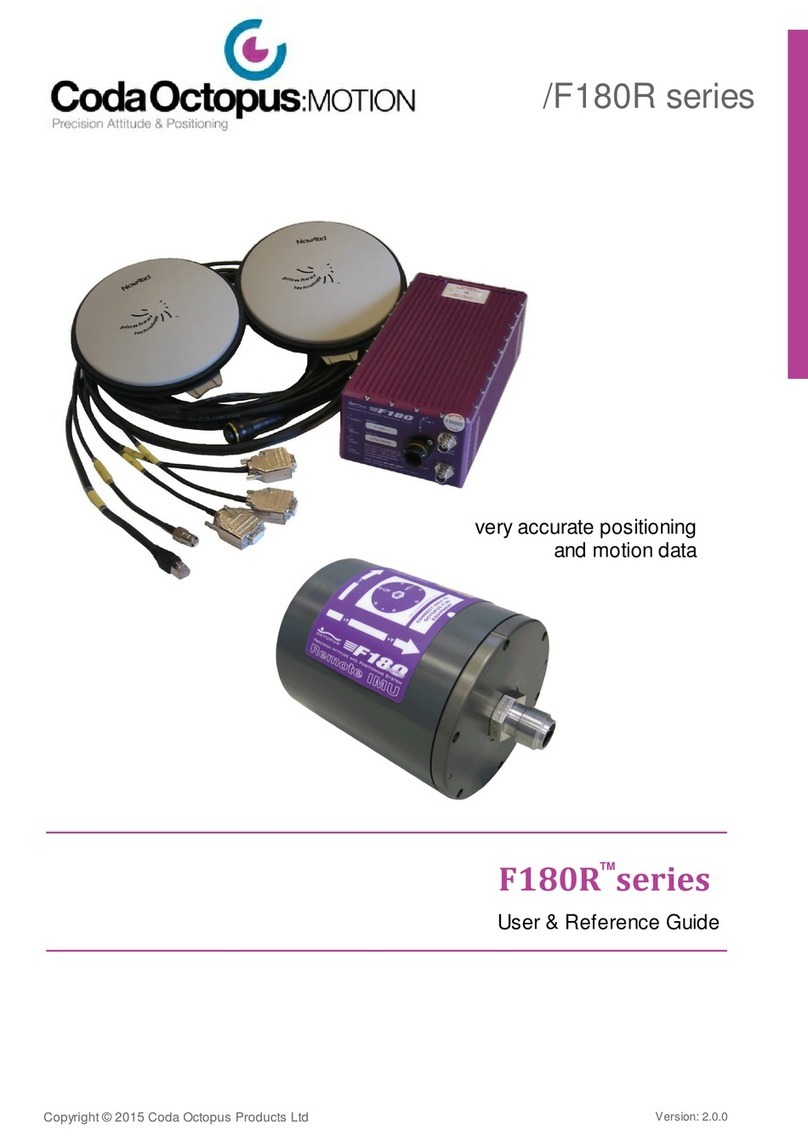
CodaOctopus
CodaOctopus F180R Series User reference guide
